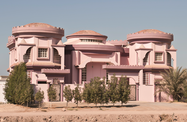With the new year underway, things are already looking up for Ras Al Khaimah’s (RAK) construction sector. Although financial results from contractors and materials suppliers reflect the economic impact of instability in key markets during 2011, progress on recent projects, announcements of new infrastructure developments and trickle-down effects of a rising tourism industry all pointing toward expansion for the sector.
The latest financial results available from the emirate’s major contractors and materials producers indicate a similar scenario for the construction sector as seen in 2011: rising revenues paired with rising costs. RAK Properties posted increased revenues for the first three quarters of 2011, during which it handed over three major projects: Julphar Towers, RAK Tower on Abu Dhabi’s Reem Island and the villas and townhouses in precinct five of Mina Al Arab in RAK.
The company’s revenues more than doubled year-on-year (y-o-y) to Dh267m ($72.68m) from Dh115m ($31.3m) in 2010, according to the firm’s third-quarter financial statement for 2011. Despite these increases, profits eased from Dh164m ($44.64m) to Dh99m ($26.95m) between 2010 and 2011 as costs rose. The company says it is confident that its revenue streams will remain steady as it begins to collect balance instalments from customers.
Construction materials firms are also starting 2012 with mixed results behind them. RAK Ceramics, the world’s largest ceramics producer, was able to push its net profits up to Dh2.58bn ($702.28m), according to the company’s 2011 third-quarter financial reports. The company cited financial instability in target markets as a factor that raised costs for the firm and ultimately squeezed its margins.
Cement producers saw similar conditions in 2011. RAK-based Gulf Cement, the largest cement producer in the UAE, reported its cost of sales rose to Dh481m ($130.93m) from Dh452m ($123.03m) y-o-y. Likewise, RAK White Cement posted revenues of Dh301.2m ($81.99m), up from Dh239.7m ($65.25m) during the same period in 2010.
Still, higher administrative, sales and marketing costs all chipped away at margins to hold profits at Dh57.8m ($15.73m), slipping slightly from Dh59.7m ($16.25m) y-o-y, according to the company’s unaudited third-quarter results.
RAK Cement, meanwhile, saw a more challenging year, with slipping revenues leading to a significantly higher net loss for the period. The public-shareholding company’s board recommended to its shareholders that no dividend be declared for December 2011.
A number of these firms and others point to similar causes for rising costs, namely instability in neighbouring countries and a flurry of belt-tightening among creditors during summer 2011’s US and Eurozone debt crises. Despite these challenges, companies were optimistic about revenue streams, which held steady or grew during this period, and indicated further growth on the horizon.
Indeed, the beginning of 2012 seems to be offering a start on the right foot. RAK’s government is continuing to improve the emirate’s infrastructure, starting with the announcement in early February of the construction of three new bridges for the emirate, according to the Emirates News Agency (WAM).
The projects are part of a broader plan for enlarging the emirate’s roads and highways, said Abdullah Yussuf, the chairman of RAK’s Department of Public Works and Services. Authorities expect the three bridges to be completed by the end of the year.
In addition to infrastructure projects, RAK’s tourism sector is showing signs that it may help boost demand for the construction sector. The emirate beat its target of 800,000 visitors in 2011, reaching 835,200, according to a report from the RAK Tourism Development Authority (RAKTIDA). Hotel occupancy was up 8.62% for beach resorts and 1.92% for city hotels, and revenue per available room increased by nearly 25%. With the government working to raise annual visitors to 1.2m by 2013 and increase total hotel rooms to 10,000 by 2016, it is likely the emirate will have higher demand for developers and construction materials.
With a combination of ongoing infrastructure work and expected construction projects to support a growing tourism sector, the construction industry as a whole is set to continue into 2012 on solid footing.

